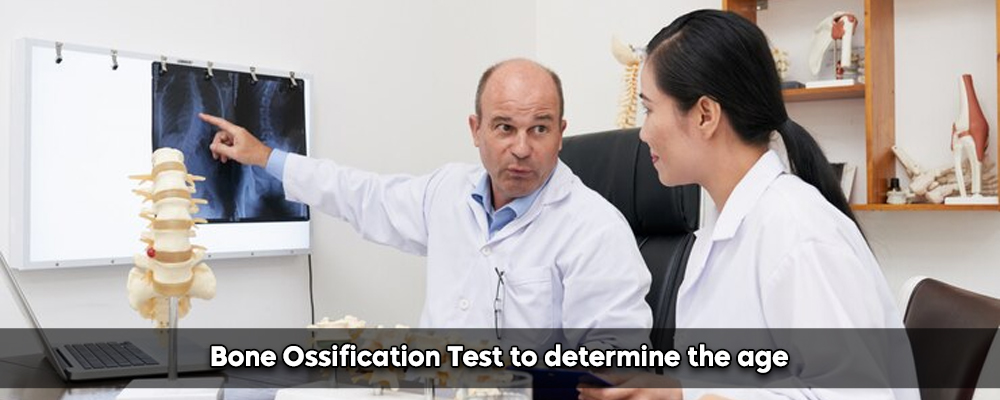Bone age is a marker of a person’s skeletal and biological maturity that helps scientists determine an individual’s age. The most popular method for determining bone age is radiography of the hand and wrist up to the age of 18, after which point bone age is determined by measuring the medial age of the clavicle until the age of 22. This is because hand and wrist radiographs cannot be used to determine bone age after the age of 18. After all, the elongation of the bone is complete by this point in adolescence. However, it should be emphasized that the ossification test varies significantly depending on individual characteristics, thus even while it is relevant, it cannot be regarded as wholly decisive.
The ossification test has several significant drawbacks, one of which is that it only provides an individual’s ‘estimated’ age rather than their actual age. It merely provides an estimate of a person’s ‘biological’ age, which is different from ‘legal’ age. Even when testing several joints, the ossification test allows a buffer of at least six months on either side. It occasionally displays a four-year fluctuation. A single bone test may result in an inaccuracy of up to two years on each side. The margin may be shortened by up to six months on either side if it is done on numerous joints whose fusion ages overlap. However, it is impossible to rule out the potential of a mistake. Particularly when it is in the border region, the ossification test provides a lot of opportunity for guesswork and does not provide a reliable indicator of a person’s age.
Need A Legal Advice
The internet is not a lawyer and neither are you. Talk to a real lawyer about your legal issue

The margin of error principle
The bone ossification test is not a precise science that can tell us a person’s actual age. The accuracy of this procedure can be impacted by personal traits including the rate at which bones and other skeletal structures grow, as was previously mentioned. In Ram Suresh Singh v. Prabhat Singh and Jyoti Prakash Rai v. State of Bihar, the Indian courts further noted that the ossification test is not conclusive for age determination because it does not reveal the exact age of the person, but that the radiological examination leaves a margin of two years on either side of the age range as prescribed by the test regardless of whether the ossification test of multiple joints is conducted.
The ossification test is no longer a reliable method for determining age after the age of thirty, according to the Indian courts. It is common knowledge that the standard of proof for determining age is likelihood rather than proof beyond a reasonable doubt.
Legal Analysis
In the case of Sunil s/o Fattesing Sable v. State of Maharashtra, The Bombay High Court ruled that the Protection of Children from Sexual Offenses Act, 2012 only requires a bone ossification test when the victim is close to reaching legal adulthood to establish the victim’s age. Judges Vibha Kankanwadi and Abhay S. Waghwase, sitting on a division bench in Aurangabad, dismissed a man’s appeal against his conviction and life sentence for raping a 14-year-old girl, noting that her father’s testimony established her age.
It cannot be argued that the girl was not a “child” in the sense of the POCSO Act’s Section 2(d) while there is still a four-year window. The court cited P. Yuvaprakash v. State (2023), in which the Apex Court determined that section 94 of the Juvenile Justice Act must be implemented in cases where there is a disagreement over the victim’s age. An ossification test may be performed to determine the period, as per section 94, if a birth certificate issued by the municipal government or panchayat or by the school is not available.
According to the girl’s school headmaster, her prior school’s school leaving certificate was provided when she enrolled in the school in the fifth standard. She was a minor at the time of the occurrence, according to the date of birth in the school records that were entered based on this certificate, he claimed. The defense underlined that when the girl was admitted to the school, no one from the administration looked at her birth certificate.
Lead India provides various legal services, including online resources and free legal advice. You can talk to a lawyer as soon as you have Lila. Ask a legal question for advice.





 Talk to a Lawyer
Talk to a Lawyer